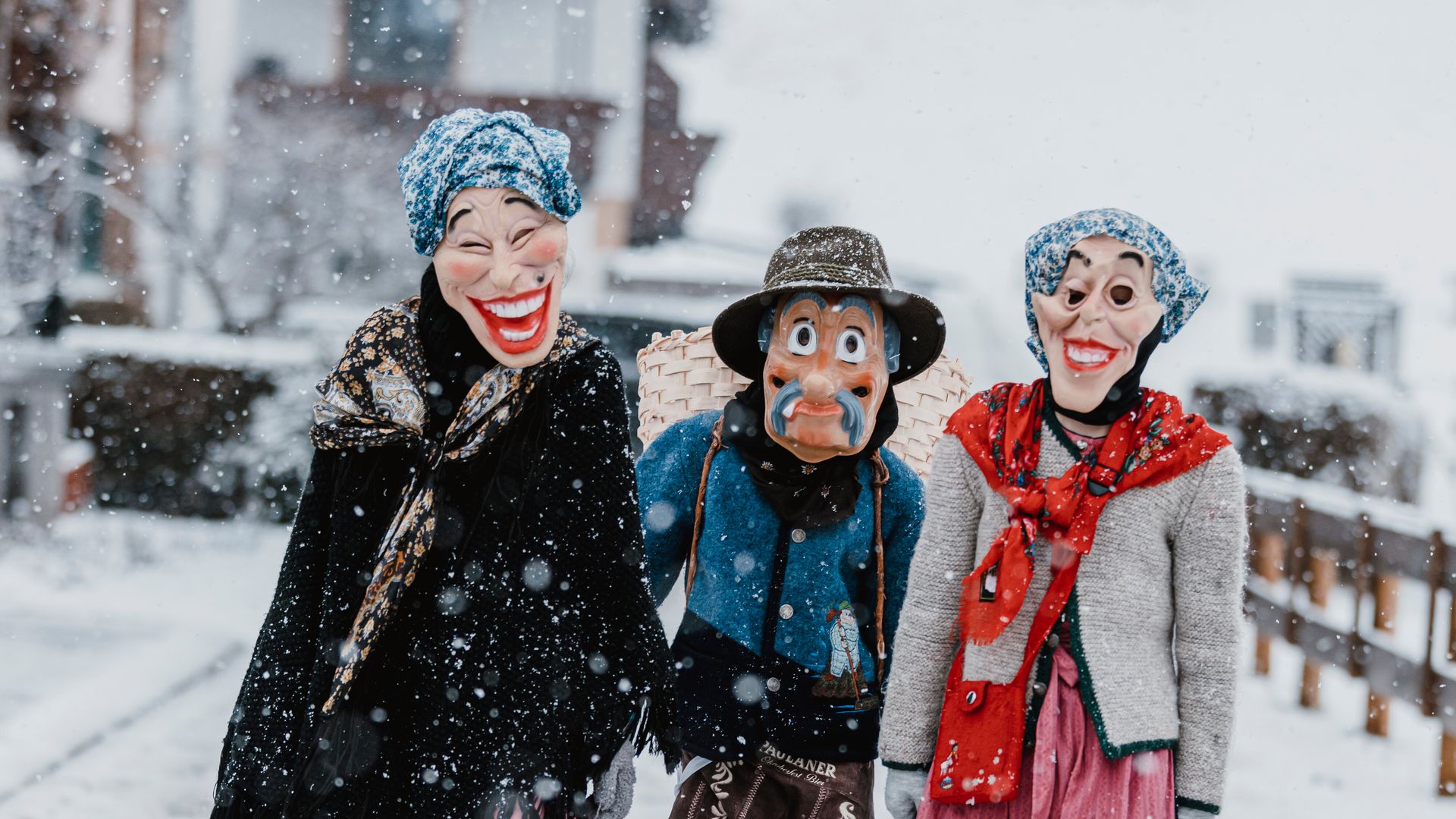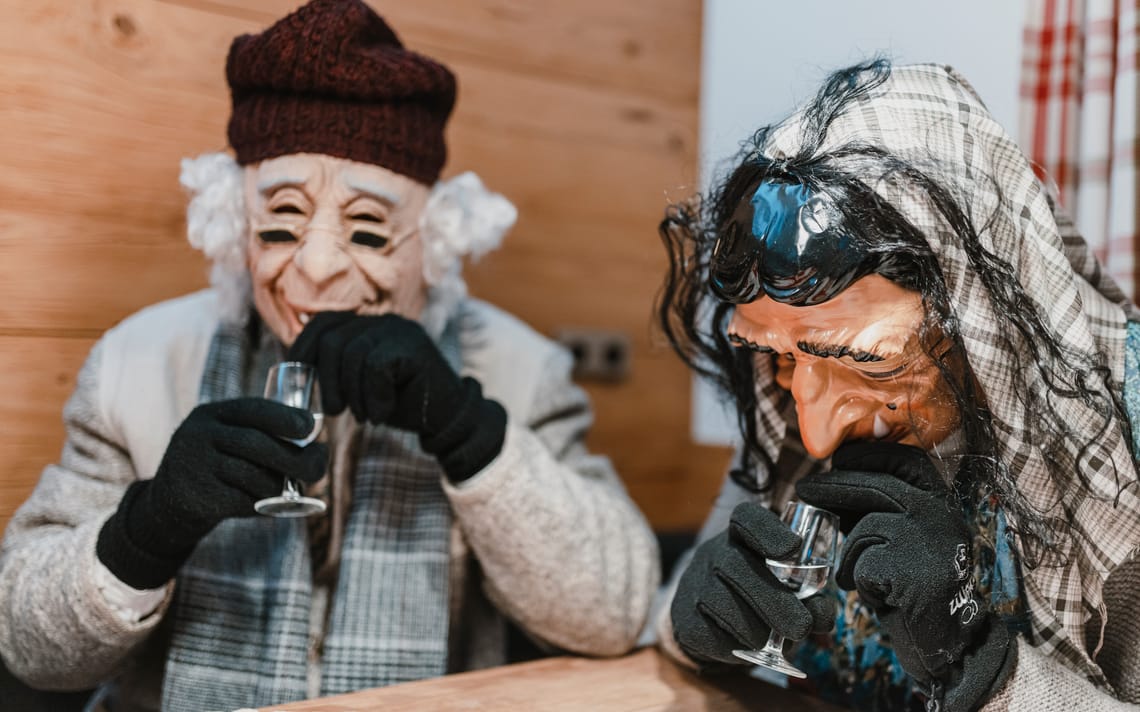The tradition of “Perchten” in Mayrhofen-Hippach
"A glixeligs nois Johr!”
The new year is only a few days old and the residents of Mayrhofen in the Ziller Valley are already enjoying the first tradition of the year, which takes place annually on the 5th January. The children are looking forward to going “Binggal-Perchten”, and adults can’t wait for it to get dark so they can go “Schnaps-Perchten” around the neighbourhood!
"Binggal Perchten" & "Schnaps Perchten"
My niece Maria and nephew Clemens would never miss the opportunity to dress up as "Binggal Perchten" and saunter through the Rauchenwald street and down Mayrhofen’s main street. "It’s so much fun, because you know that people don’t recognise you. But we can see them from behind our masks and it makes us giggle as they try to guess who we are!" says Clemens bursting with excitement. Maria, who is a little shyer than her brother, hangs back a bit and holds his hand. Disguising her voice, she calls out "A glixeligs nois Johr" which means "happy new year". Everyone loves to hear these words as it brings good luck for the coming year. In return, Clemens and Maria are given sweets, tangerines, Christmas biscuits and sometimes a few euros.
I go home and get ready to enjoy a relaxing evening by the lights of the Christmas tree. However, my daughter Christiana comes home from work and tells me that she’s going "Schnaps Perchten" with a friend. She asks me to go down to the cellar with her and help her to find a suitable outfit. As we search for some tattered old clothes for her to wear, I decide that I also really fancy going "Perchten" in Mayrhofen again. In the end my sister Gerlinde also joins us and we go as a group of four. We get dressed up, drink the first schnapps and head out. Door to door, we say the magic word "A glixeligs nois Johr" and are given schnapps which we have to drink with a straw. You aren’t allowed to take your mask off to drink as you would be recognised!
“Groiggn & rabeins Kraut”
Fortunately, the "Perchten" don’t only receive liquid refreshment. In some places a royal feast of culinary delights awaits us. Usually, fatty foods are offered to compliment the traditional schnapps. Between schnapps you can look forward to "Groiggn & rabeinem Kraut" (pork scratchings with red cabbage), homemade bread, dripping, Christmas biscuits and hearty beef broth, all of which are good for lining your stomach. However, eating without taking your mask off really isn’t an easy task and under no circumstances are you allowed to be recognised! We visit the most popular "Perchten" locations and get merrier and merrier as we go from house to house. The schnapps begins to take effect and a "glixeligs nois Johr" soon become "a glixlg nois Johr", until you lose the ability to speak at all!
Ablarven
But before then the tradition comes to an end –at midnight the "Schnaps Perchte" have to reveal their identity wherever they are at the time. This is known as "Ablarven". The great thing about this tradition is that throughout the evening you meet "colleagues" who join you in the same house, bar or restaurant but who you then lose on the way to the next, and who are replaced by other "Perchten". The evening of drinking is so much fun until the very end, at which point you are really looking forward to going to bed!
The history of the tradition
In the Bavarian and Austrian Alps, Perchten are spirits which appear at the end of December and in January. The name "Perchten" comes from the Middle High German word "berchtnacht" which refers to Three Kings’ Day on the 6th January. In the Ziller Valley there are no evil "Perchten" like in some other Austrian regions. Historically, in tough times, people would get dressed up and visit rich farming families to wish them a happy new year. The "Perchten" were given food and drink and the farm was blessed with good luck for the following year.
Author of this story: Elisabeth Frontull Photo credit: Thomas Eberharter Photography



